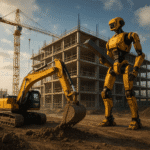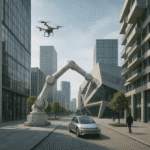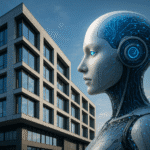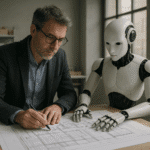The convergence of automation and cutting-edge design is reshaping the very fabric of our built environment. Architects, engineers, and technologists are collaborating to pioneer spaces that not only respond to human needs but anticipate them. The rise of futuristic architecture heralds an era where intelligent systems, adaptive materials, and bio-inspired frameworks coalesce into dynamic, living structures.
Technological Foundations of Futuristic Architecture
The backbone of tomorrow’s architecture relies on an intricate network of computational tools and AI platforms. Gone are the days when form followed mere function; today, buildings learn, evolve, and self-optimize.
AI-Driven Design Intelligence
Algorithms leveraging machine learning generate vast design permutations in minutes. By feeding parameters such as sunlight exposure, thermal comfort, and user behavior into AI models, architects obtain optimized configurations that traditional methods could never conceive. This AI-driven paradigm fosters buildings that adapt their shape, orientation, and envelope performance in real time.
Robotic and Automated Construction
Construction sites of the near future will be populated by fleets of drones and robotic arms. 3D printing of concrete and composite panels allows rapid, precise assembly with minimal waste. These robotic systems not only erect structural components but also integrate electrical, plumbing, and HVAC conduits as they work, dramatically reducing labor costs and errors.
Smart Materials and Sustainability
The quest for resilient, eco-friendly structures has propelled the development of smart materials that respond dynamically to environmental stimuli.
- Phase-change materials absorb and release heat to regulate indoor temperatures without active cooling.
- Electrochromic glass tints automatically based on solar intensity, optimizing glare control and energy consumption.
- Self-healing concrete employs embedded microcapsules that release healing agents when cracks appear, extending lifespan.
Moreover, the integration of renewable energy systems—solar photovoltaic skins and vertical-axis wind turbines—ensures that structures move closer to net-zero or even net-positive energy performance. eco-conscious design strategies, combined with materials that store energy or capture rainwater, address the pressing challenges of resource scarcity and climate change. The commitment to sustainability is central to every decision, from material sourcing to end-of-life recyclability.
Digital Twins and Virtual Modeling
As physical and digital realms converge, the concept of the digital twin transforms building management and occupant experience. A digital twin is a real-time, data-driven replica of a structure, enabling continuous monitoring and predictive maintenance.
Real-Time Monitoring and Predictive Analytics
Embedded sensors collect environmental data—temperature, humidity, structural strain—feeding a cloud-based twin. Advanced analytics identify anomalies before they escalate, scheduling repairs or adjusting operational parameters autonomously. This proactive stance reduces downtime and optimizes resource usage.
Immersive Design Review
Virtual reality and augmented reality interfaces allow stakeholders to inhabit a design before construction begins. Walkthroughs in simulated environments facilitate early detection of design flaws, enhancing collaboration among clients, engineers, and city planners. The synergy of these tools ensures every element is fine-tuned for both performance and human delight.
Biomimicry and Adaptive Systems
Nature’s evolutionary wisdom offers a treasure trove of solutions for modern architecture. By emulating biological processes, designers create structures that adapt, self-regulate, and thrive under changing conditions.
Structural Efficiency Inspired by Nature
Programs analyze the bone-like lattice of bird skeletons or the branching of trees to inform parametric design strategies. Lightweight, high-strength frameworks achieve minimal material usage while maintaining robust integrity. These patterns are translated into facades and support systems through advanced fabrication technologies.
Responsive Building Skins
Adaptive envelopes mimic the behavior of pine cones or human skin pores, opening or closing in response to humidity or temperature. This dynamic modulation reduces reliance on mechanical HVAC systems. The result is a living facade that breathes, insulates, and protects simultaneously.
Urban Resilience in Automated Cities
Automation extends beyond single buildings to entire districts and metropolises. Smart city frameworks leverage the Internet of Things, big data, and autonomous vehicles to create resilient, efficient urban ecosystems.
- Intelligent traffic management systems reroute flows to alleviate congestion and reduce emissions.
- Autonomous delivery robots and drones streamline logistics, minimizing street-level pollution and noise.
- Distributed microgrids coordinate renewable energy sources for reliable power during disruptions.
In these environments, public spaces respond to occupant needs: lighting, air quality, and acoustics adjust as crowds gather. Emergency services deploy drones and sensor networks to identify hazards instantly, enhancing public safety. The urban fabric becomes a dynamic tapestry, weaving together technology and human experience in harmony.
Ethical Dimensions and Human-Centered Futures
While technology accelerates design possibilities, ethical considerations shape its application. Privacy concerns arise as buildings gather personal data; regulations must ensure transparent governance and responsible AI. Equitable access to automation-enhanced environments is critical to prevent a digital divide where only affluent communities enjoy advanced comforts.
Human-centric principles guide architects to prioritize well-being, cultural context, and social connectivity. Collaborative platforms enable communities to contribute to design decisions, fostering a sense of ownership. The goal is to craft spaces that not only leverage digital twin intelligence and robotic precision but also celebrate diversity, inclusivity, and collective aspiration.
The Path Ahead
As the boundaries between code and concrete dissolve, the possibilities for innovation multiply. Embracing resilience and biomimetic insights, integrating parametric design and smart materials, and deploying AI-driven analytics will define the signature of 21st-century architecture. The era of automation empowers us to envision buildings as organisms—capable of learning, healing, and evolving alongside their inhabitants.
The voyage toward fully autonomous, adaptive habitats is under way. With each technological milestone, architects and engineers reaffirm their commitment to a future where built environments not only serve but also inspire generation after generation.










